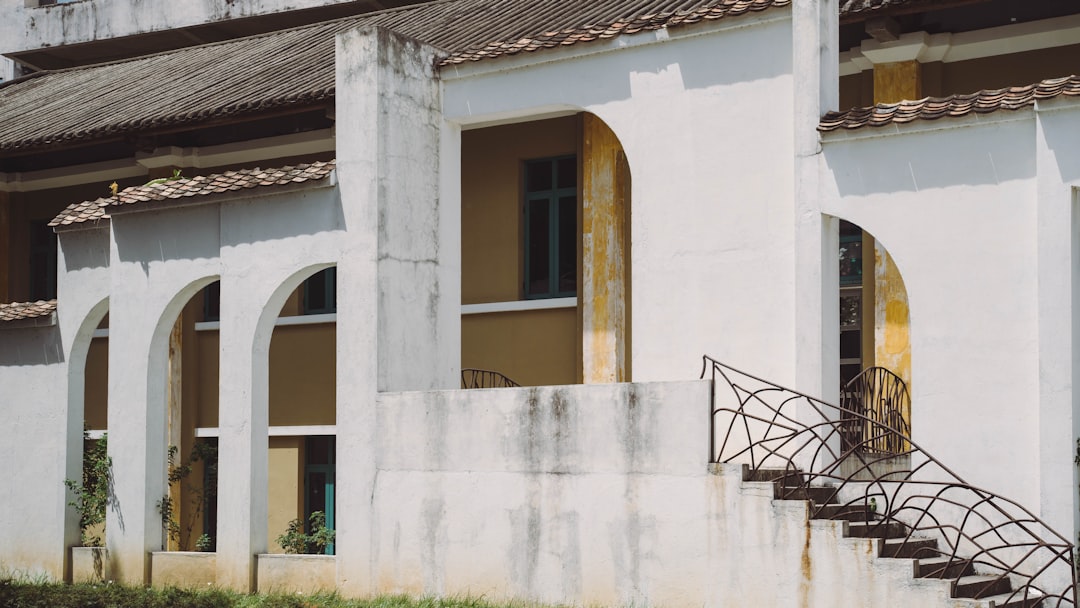

Engage prospects with a scan and streamline customer engagement with FREE QR code marketing tools by Sona – no strings attached!
Create a Free QR CodeFree consultation

No commitment

Engage prospects with a scan and streamline customer engagement with FREE QR code marketing tools by Sona – no strings attached!
Create a Free QR CodeFree consultation

No commitment
As the Property Preservation Services sector rapidly shifts toward digital transformation, businesses are under increased pressure to capture more high-value leads and engage prospects across both offline and online channels. Traditional marketing tools like printed brochures and static signage are often disconnected from the rest of the funnel, making it difficult to attribute interest, measure conversion, or re-engage interested prospects. In a space where preserving property value and connecting efficiently with property owners, realtors, and investors is key, these gaps can result in critical missed opportunities and costly delays, especially when high-intent leads go unnoticed or untracked.
QR codes in marketing have emerged as a fast, frictionless way to move prospects from a physical touchpoint into an optimized digital experience. In Property Preservation Services, QR codes bridge the divide between offline interactions and a data-rich digital funnel, making it possible for busy field teams and administrative staff to streamline appointment bookings, enable on-the-spot inquiries, power secure document access, and transform every print asset into a dynamic lead-capture channel. This reduces the lag between initial prospect engagement and follow-up while also closing the visibility gap that typically leaves anonymous visitors or interested parties untracked.
Leveraging QR technology, Property Preservation businesses can drive measurable outcomes like faster response times, increased inquiry rates, and more precise targeting of high-intent prospects. Enhanced data capture allows for real-time integration with CRM and marketing systems, helping teams avoid the pitfalls of late or incomplete lead tracking that can occur with manual processes; see Sona QR’s product overview for capabilities. This guide covers strategic deployment of QR codes in Property Preservation Services to boost business impact and build a scalable, data-driven lead engine in a cost-efficient and compliant way.

For many teams in property preservation, a recurring pain point is losing high-value prospects simply because their initial interest is never recorded. Paper door hangers without a reply option, printed brochures without traceable links, or contractor business cards that end up in a drawer all contribute to lead leakage. Even when a website URL is printed, few people type it on the spot, and the moment of intent fades before action is taken.
QR codes bridge the gap between physical touchpoints such as posters, property signage, field reports, inspection forms, and door notices, and digital conversion. A fast scan can route a prospect to a mobile-optimized booking page, request-for-estimate form, service menu, or a secure document upload. Because the scan is tracked and attributed, every interaction moves from anonymous interest to actionable data that can be routed to sales, operations, or customer success in real time.
Here is how to use QR codes effectively across your preservation workflows:
A centralized platform like Sona QR makes this approach practical at scale. It allows teams to generate unique codes per asset, push dynamic destination changes after printing, and unify analytics with pipeline and revenue attribution. The result is a fast, low-cost upgrade from static offline materials to a responsive, measurable lead engine.

Property preservation has unique operational realities. Teams are distributed across cities and counties, visits are time-sensitive, and many interactions occur at a physical property or in the field rather than at a computer. Paperwork stacks up, stakeholders range from banks and servicers to municipalities and private investors, and everyone wants transparent updates without added complexity. In this context, the speed and simplicity of QR codes align perfectly with the way work actually gets done.
QR codes resolve common friction points by giving every printed asset a digital next step that is measurable and actionable. Owners can scan a notice to book a visit. Realtors can access a secure report with one tap. Municipal officers can verify a compliance status while on site. Meanwhile, your team sees where scans occurred, what device was used, and which assets did the job, then adapts the strategy with data rather than guesswork. For industry context, see leveraging QR codes.
For property preservation providers, QR codes convert physical touchpoints into measurable events that shorten the time from interest to action. When combined with smart routing and CRM integration, those events become the heartbeat of a predictable pipeline.

Choosing the right QR format ensures that each scan triggers the desired outcome and captures the right data. Property preservation organizations frequently manage sensitive documents, fast-moving schedules, and multi-party coordination, so formats that enable secure, flexible, and trackable interactions are paramount.
Static codes have a single, fixed destination and are best for evergreen content that rarely changes. Dynamic codes can be edited after printing, tracked in detail, and personalized by channel. In preservation, dynamic codes are typically the better choice since service menus, availability, and compliance requirements evolve often.
Dynamic QR codes, especially when managed in a platform like Sona QR, unlock advanced capabilities such as UTM tracking, geo-based routing, and A/B testing. They also allow your team to sunset destinations that are no longer valid and roll out updated content safely without reprinting thousands of assets.
The biggest growth opportunity often lies outside your website analytics. Your audience is reading door notices, collecting invoices, receiving work orders, and walking past vehicle signage every day. If those assets do not offer a direct way to act and be counted, your pipeline will miss a large share of ready-to-engage leads.
Strategic placement of QR codes puts conversion opportunities in front of people precisely when the need is top of mind. In preservation, this usually happens on-site, at the mailbox, at the entrance, or in the immediate follow-up paperwork. Map your field workflows and plant QR codes at the exact moment where an owner, realtor, or inspector typically has a question or requests the next step.
Place codes where they are easy to see and scan, such as eye-level signage near entry points, the top third of a door hanger, or the corner of a document with a clear call to action like Scan to Book an Inspection. Test scannability in realistic conditions including bright sun, rain, dust, and at angles.

Traditional methods often fall short because they do not capture intent at the moment it happens. With QR-enabled workflows, you intercept that fleeting interest and convert it into structured data, qualified leads, and faster scheduling. These use cases align tightly with common property preservation interactions.
In each case, dynamic QR codes paired with mobile-friendly destinations reduce friction and encourage immediate action. Integrating scan events into your CRM enables automatic follow-up sequences, such as SMS reminders, email confirmations, and sales alerts for high-intent scans.
Each QR scan is more than a click. It is a physical signal tied to context: where it happened, what was scanned, and why the person scanned at that moment. When you deploy multiple codes across different touchpoints, you can segment your audience by intent and lifecycle stage to deliver highly relevant follow-up. For playbook-level tactics, see intent-driven retargeting.
In property preservation, you can distinguish between stakeholders like owner-occupants, banks and servicers, investor landlords, realtors, and municipal contacts. You can also tag by scenario such as emergency stabilization, routine maintenance, compliance remediation, or pre-listing repairs. These distinctions matter for messaging because the timeline, budget, and approval process vary widely.
With Sona QR, each code becomes an intelligent entry point that automates segmentation and ties scan activity to downstream engagement. This helps you retarget based on real behavior rather than assumptions, improving relevance and ROI.
QR codes function as connectors across offline and online channels, giving you immediate engagement and measurable data where attribution was previously impossible; learn how with offline attribution. For property preservation, the media mix spans print, field materials, local signage, and community events. QR codes make each of those assets a trackable part of your digital funnel.
Integrating QR across channels allows you to see which combinations drive results. Maybe door hangers followed by a retargeting ad and a follow-up SMS produce the highest booking rate. Or perhaps invoices with a QR to a survey yield insights that reduce support calls. With a centralized platform like Sona QR, you can manage every code, monitor performance, and sync scan data to your CRM and ad accounts for a connected strategy.
QR codes are the offline onramp to your digital engine. When each scan is captured, classified, and connected to a follow-up journey, your traditional channels stop being black boxes and start contributing verifiable pipeline.
Property preservation teams are most successful when they design QR initiatives like any other campaign: with a clear goal, a user-friendly destination, rigorous testing, and ongoing optimization. Use the following framework to launch with confidence.
Clarify what business outcome you want. Are you trying to reduce missed appointments, accelerate estimate requests, or streamline document delivery? Choose one primary outcome and a secondary metric to ensure focus. For example, a door-hanger campaign might prioritize inspection bookings with a secondary goal of capturing preferred contact channels.
Tailor the use case to your environment. A code violation remediation campaign might drive scans to a checklist and scheduling flow, while a bank-owned property program might prioritize secure report access for asset managers. Document the exact conversion you expect after the scan, such as form submission or booking confirmation.
Static codes are suitable for content that will not change for months. They are simple and quick. Dynamic codes enable tracking, editing, and personalization after printing. In property preservation, dynamic codes are usually the best fit since destinations, offers, and documents change frequently.
Consider compliance and data needs. If you plan to track source, location, device, and trigger automated workflows, you need dynamic codes. Platforms like Sona QR provide these capabilities out of the box, along with integration to CRMs and ad platforms for retargeting.
Add brand elements without sacrificing scannability. Include a clear frame, strong contrast, and a short, benefit-driven call to action such as Scan to Book an Inspection or Scan to View Your Report. Keep whitespace around the code and avoid placing it on busy backgrounds.
Test in real-world conditions. Scan with different devices, in various lighting, and from multiple angles. If codes are posted outdoors, laminate them or use weatherproof stickers. Test from common distances like three to six feet on signage, and six to twelve inches on documents or badges.
Match placements to behavior. Put appointment booking codes on door notices and entrance signage. Place vCard codes on uniforms and IDs. Add payment or survey codes to invoices. Use mailers to engage neighborhoods affected by storms or seasonal issues.
Roll out in manageable waves. Start with one or two channels per campaign so you can isolate effects and learn quickly. Make sure staff know what each code does and how to talk about it with property owners and partners. Prepare your backend workflows, including confirmation pages, automated emails, and internal alerts.
Monitor scan volume, conversion rate, and time to action. Compare performance by placement and creative. Identify where people drop off and address usability issues such as long forms or non-responsive pages. Use UTMs on every destination to measure traffic sources accurately.
Iterate quickly. Test alternative calls to action, new landing page layouts, and different incentives like priority scheduling. With Sona QR, you can switch destinations or run A/B tests without reprinting, then push winning variations across all codes tied to the same use case.
Capturing leads is only the first step. To justify investment and optimize spend, you need to connect scans to downstream actions like booked appointments, signed work orders, and paid invoices. Without that visibility, you will struggle to know which assets drive ROI and where to scale.
Advanced QR platforms and connected analytics give preservation teams end-to-end insight. When you combine scan data with CRM records and revenue attribution, you can see how an inspection notice led to a booking, progressed to a site visit, and closed as a job. This makes QR part of a measurable performance strategy instead of a novelty.
Sona QR captures real-world engagement at the point of interest. Sona.com ties those interactions to pipeline movement and revenue, enabling smarter budget allocation and continuous optimization.
As you scale your program, small changes can compound into big results. Standardize your approach to code creation, placement, testing, and follow-up, then keep improving with data. Make scanning feel worthwhile by setting clear expectations about what the user will get and how quickly.
Consider the physical environment of your assets. Codes exposed to dust, rain, or glare need protective materials and strong contrast. Codes on vehicles or uniforms must be large enough to scan quickly from a reasonable distance. Staff training matters too, because a confident explanation from a field tech can increase scan rates dramatically.
Creative deployments in preservation include QR codes on code compliance notices that link to remediation plans, and QR codes on storm-response mailers that allow neighbors to request rapid assessments with photos attached. Both tactics make it effortless for prospects to engage and for your team to prioritize high-need cases.

Organizations that integrate QR across field assets and paperwork usually see measurable lifts in speed, satisfaction, and pipeline quality. The key is to remove friction at the exact moment a decision is being made, then capture the data that proves impact. Below are examples aligned with common preservation scenarios.
When QR codes power the handoff from offline awareness to digital action, administrative work can drop by double digits. Teams often reallocate time from manual intake and document distribution to higher-value tasks like quality control and client communication, which compounds revenue and retention gains.
Success with QR codes depends on thoughtful design, realistic testing, and disciplined follow-up. Make scanning intuitive and safe, then build a system that responds quickly when someone raises their hand. The most common pitfalls stem from poor placement, weak calls to action, and destinations that are not mobile-friendly.
Think through edge cases. Codes posted outdoors need protection and high contrast. Codes on glossy surfaces can suffer glare. Small codes on moving vehicles are hard to scan. Finally, never route sensitive content to an unsecured destination. Use authenticated portals and dynamic codes you can revoke or rotate if needed.
QR technology in Property Preservation Services transforms traditional field and print assets into always-on channels for lead capture and engagement. By overcoming common challenges like lost or anonymous prospects and inefficient lead tracking, businesses benefit from a consistent pipeline, improved segmentation, and faster conversion cycles. Seamless integration of QR codes delivers real-time analytics and data-driven outreach, enabling teams to provide the responsive, streamlined experiences that property owners and investors expect.
If you are ready to put this into practice, generate a few dynamic codes tied to your highest-impact touchpoints: door notices, invoices, and uniforms. Use Sona QR to create, brand, and track codes in minutes, then connect scan data to your CRM with Sona for attribution and automation. Start creating QR codes for free.
QR codes have revolutionized property preservation services by transforming static outreach into dynamic, lead-generating opportunities. Whether it’s capturing potential client information on-site, streamlining service requests, or enhancing communication with property owners, QR codes simplify engagement and deliver measurable results. Imagine instantly knowing which properties generate the most interest and being able to follow up with qualified leads without delay.
With Sona QR, you can create dynamic, trackable QR codes that update in real time—no need to reprint materials as campaigns evolve. Every scan connects directly to your lead database, turning offline interactions into actionable insights that boost customer acquisition and improve overall service efficiency. Start for free with Sona QR today and turn every property visit into a powerful lead-capturing moment.
Best practices include using dynamic QR codes on physical assets like door hangers and signage to enable easy lead capture, integrating scan data with your CRM, testing codes in real-world conditions, training field teams to promote scanning, and continuously monitoring and optimizing campaigns.
Look for services that use digital tools like QR codes for seamless appointment scheduling, secure document access, and real-time communication, and that integrate with CRM systems to ensure efficient lead tracking and follow-up.
Costs vary but using QR codes can reduce print waste, manual data entry, and administrative overhead, making property preservation services more cost-efficient by streamlining workflows and improving lead conversion.
QR codes bridge offline and online interactions, enable effortless lead capture, provide real-time tracking and analytics, improve appointment scheduling, secure document access, reduce manual processes, and enhance customer engagement and pipeline visibility.
They ensure timely inspections, maintenance, and compliance through efficient scheduling and communication, reduce delays with digital tools like QR codes, and provide transparent updates that help preserve and enhance property value.
Use Sona QR's trackable codes to improve customer acquisition and engagement today.
Create Your FREE Trackable QR Code in SecondsJoin results-focused teams combining Sona Platform automation with advanced Google Ads strategies to scale lead generation

Connect your existing CRM

Free Account Enrichment

No setup fees
No commitment required

Free consultation

Get a custom Google Ads roadmap for your business






Launch campaigns that generate qualified leads in 30 days or less.
